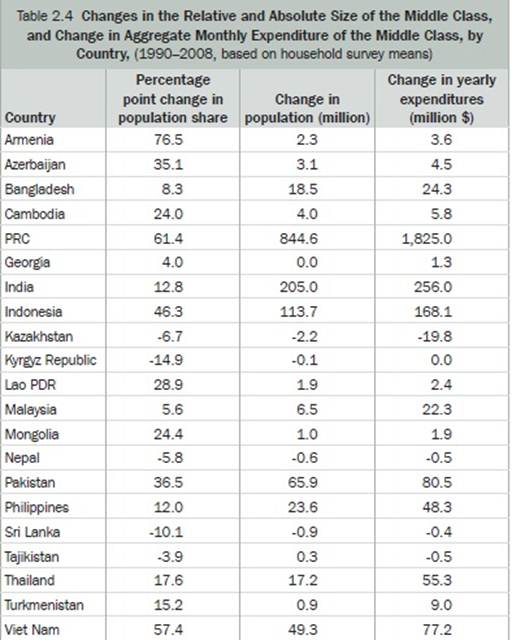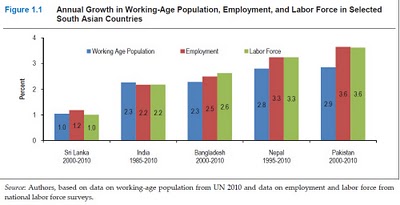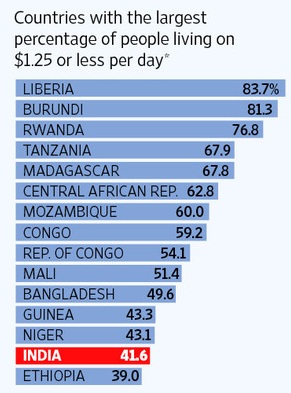Bangladesh and Pakistan: A 2012 Comparison
By Riaz Haq
CA
Lavish praise for Bangladesh and scathing criticism of Pakistan mark the anniversary of the painful events leading up to the breakup of Pakistan in December 1971. This annual ritual is usually led by writers from Pakistan's arch-rival India. A few Bangladeshi nationalists and disgruntled Pakistanis join in as well. Here are a few samples of this attitude:
"Not long ago, when you thought of a South Asian country ravaged by floods, governed by bumblers and apparently teetering on the brink of chaos, it wasn't Pakistan that came to mind. That distinction belonged to Bangladesh.....Bangladesh has much to be proud of. Its economy has grown at nearly 6% a year over the past three years. The country exported $12.3 billion worth of garments last year, making it fourth in the world behind China, the EU and Turkey..... Nearly 40 years ago, only the most reckless optimist would have bet on flood-prone, war-ravaged Bangladesh over relatively stable and prosperous Pakistan. But with a higher growth rate, a lower birth rate, and a more internationally competitive economy, yesterday's basket case may have the last laugh." - Sadanand Dhume, Wall Street Journal
"Per capita income in West Pakistan in 1950 was only four per cent higher than that of East Pakistan. In 1970 per capita income in West Pakistan exceeded that of East Pakistan by 61 percent. The increase in disparity of two wings reinforced the secessionist argument that West Pakistan was becoming richer at the expense of East Pakistan....annual per capita income growth in Bangladesh since 1972 exceeded almost every year total per capita income growth in East Pakistan in twenty years. This clearly suggests that political independence provided much more conducive environment for growth in Bangladesh than united Pakistani. . Though economic growth in East Pakistan was revived during Ayub Khan's so-called decade of reforms, growth rate in erstwhile East Pakistan was much lower than that of West Pakistan." - Akbar Ali Khan, Bangladesh's Daily Star
"In the world of development achievements and democratic and secular credentials, it is Bangladesh today which offers a rather sad comment on Pakistan`s numerous failed promises. Bangladesh is one of the six countries in Asia and Africa which has been feted for its progress towards achieving its Millennium Development Goals, a set of targets that seek to eradicate extreme poverty and boost health, education and the status of women worldwide by 2015....The West Pakistani elite which lived off the resources of East Pakistan for 25 years and was happy to see the basket case East Pakistan become Bangladesh, needs to seriously come to terms with its continuing hubris and past. The least that the civilian and military Pakistani elite can do is to seek forgiveness for the crimes committed four decades ago, and to begin to learn how basket cases and failed states can become successful democratic, developmental and secular states." - S. Akbar Zaidi, Dawn
Let's now assess how Bangladesh and Pakistan have performed since 1971 by looking at some key indicators like per capita income, upward mobility and consumption of energy and cement in the two countries.
Per Capita Income:
Economic gap between East and West Pakistan in 1960s is often cited as a key reason for the secessionist movement led by Shaikh Mujib's Awami League and the creation of Bangladesh in 1971. This disparity has grown over the last 40 years, and the per capita income of Pakistan now stands at more than twice of Bangladesh's in 2012 in nominal dollar terms, higher than 1.6 as claimed by Akbar Ali Khan in 1971.
Here are some figures from Economist magazine's EIU 2013:
Bangladesh GDP per head: $695 (PPP: $1,830)
Pakistan GDP per head: $1,410 (PPP: $2,960)
Pakistan-Bangladesh GDP per head Ratio: 2.03 ( PPP: 1.62)
Upward Economic Mobility:
Pakistan has continued to offer much greater upward economic and social mobility to its citizens than Bangladesh and India over the last two decades. Since 1990, Pakistan's middle class has expanded by 36.5%, India's by only 12.8% and Bangladesh's by just 8.3%, according to an ADB report titled "Asia's Emerging Middle Class: Past, Present And Future. ”

Per Capita Energy Consumption:
Energy consumption in this day and age generally indicates a nation's level of industrialization, productivity and standard of living. Going by this yardstick, Pakistan's 14 million BTUs per capita consumption is well ahead of Bangladesh's 6 million BTUs per capita as estimated by US Energy Information Administration for 2009 .
Per Capita Cement Consumption:
Cement use is an important barometer of national economic activity in developing countries. Pakistan's cement consumption of 132 kg per capita is significantly higher than Bangladesh's 85 kg per person.
Job Growth:
Pakistan's employment growth has been the highest in South Asia region since 2000, followed by Nepal, Bangladesh, India, and Sri Lanka in that order, according to a recent World Bank report titled "More and Better Jobs in South Asia" .

Total employment in South Asia (excluding Afghanistan and Bhutan) rose from 473 million in 2000 to 568 million in 2010, creating an average of just under 800,000 new jobs a month. In all countries, except Maldives and Sri Lanka, the largest share of the employed are the low ‐ end self-employed.
Other Facts:
Here are a few other relevant data points in comparing Bangladesh and Pakistan:
1. Bangladesh is still categorized by the World Bank among low income and least developed countries of the world, while Pakistan is a middle income country and classified well above the list of least developed countries of the world.

2. Bangladesh is ranked as the 11th poorest country in the world by the World Bank in terms of the percentage of population living on $1.25 or less a day. Neighboring India is the 14th poorest on this list, while Pakistan does not show up on it. The rest of the nations on this list are all in sub-Saharan Africa.
3. In 1947, East Pakistan started with a lower economic base than West Pakistan, and the loss of its Hindu Bengali business elite in 1947 left it worse off. It also didn't have the benefit of the large number of Muslim businessmen who migrated to West Pakistan , particularly Karachi, after partition of India in 1947.
4. Pakistani economist Dr. Ishrat Husain explains it well when he says that "although East Pakistan benefited from Ayub’s economic reforms in 1960s, the fact that these benefits were perceived as a dispensation from a quasi-colonial military regime to its colony — East Pakistan — proved to be lethal."
It must, however, be acknowledged that Bangladeshi economy has been outperforming Pakistan's in the last few years, particularly after President Musharraf's departure in 2008 . Bangladesh has also made significant strides on various social indicators and it now ranks just one notch below Pakistan on human development index 2011. Bangladesh's family planning efforts have been remarkably successful in lowering the fertility rate of Bangladeshi women, an area where Pakistan significantly lags behind the rest of South Asia.
Back to Pakistanlink Homepage

